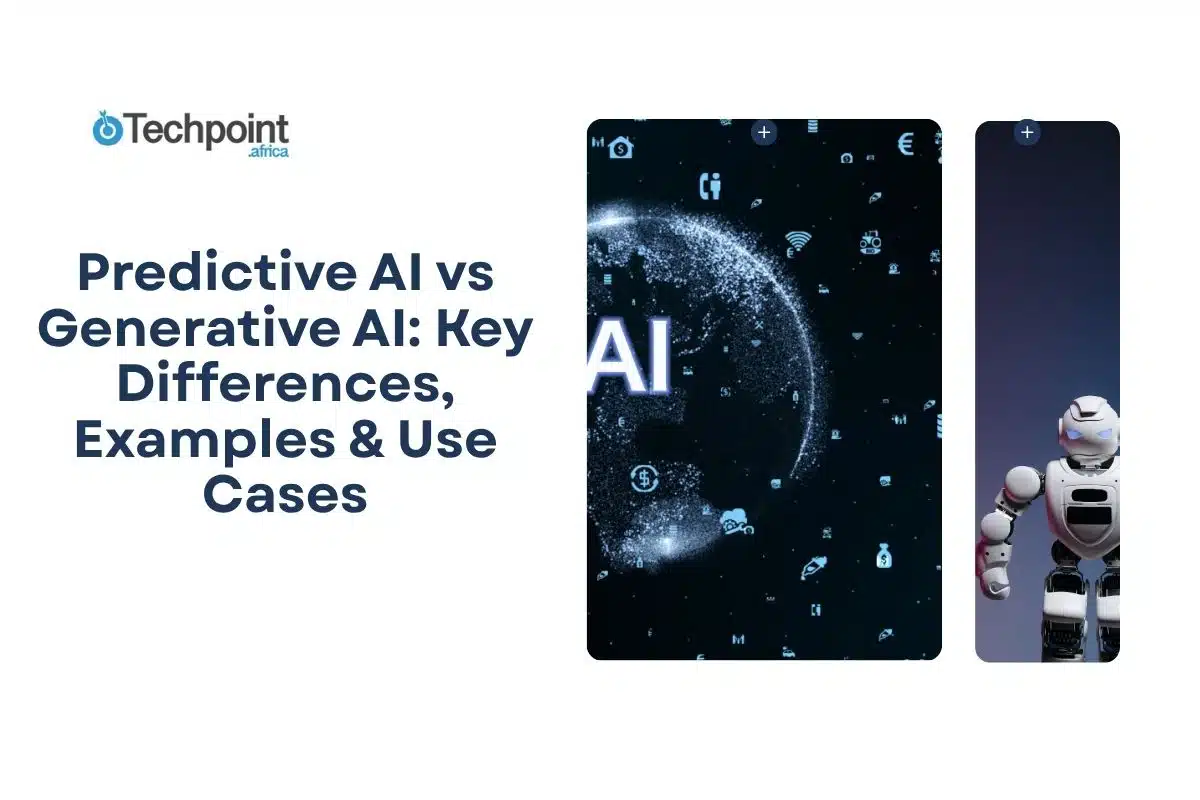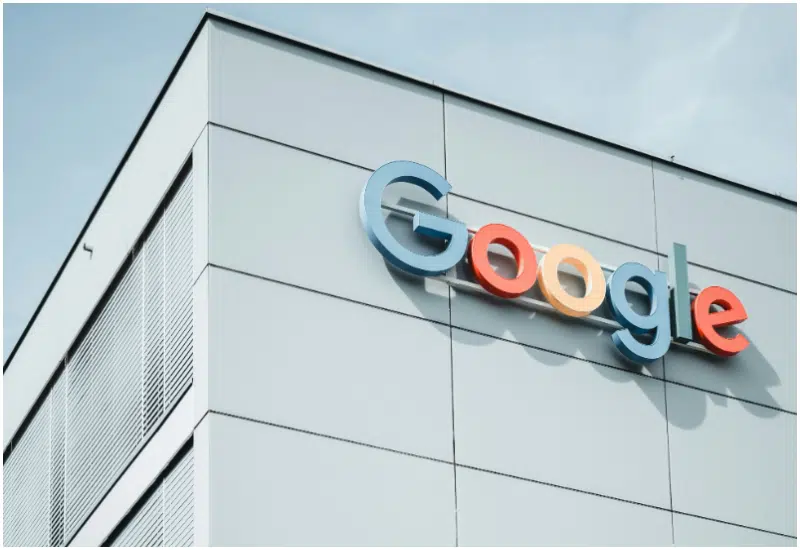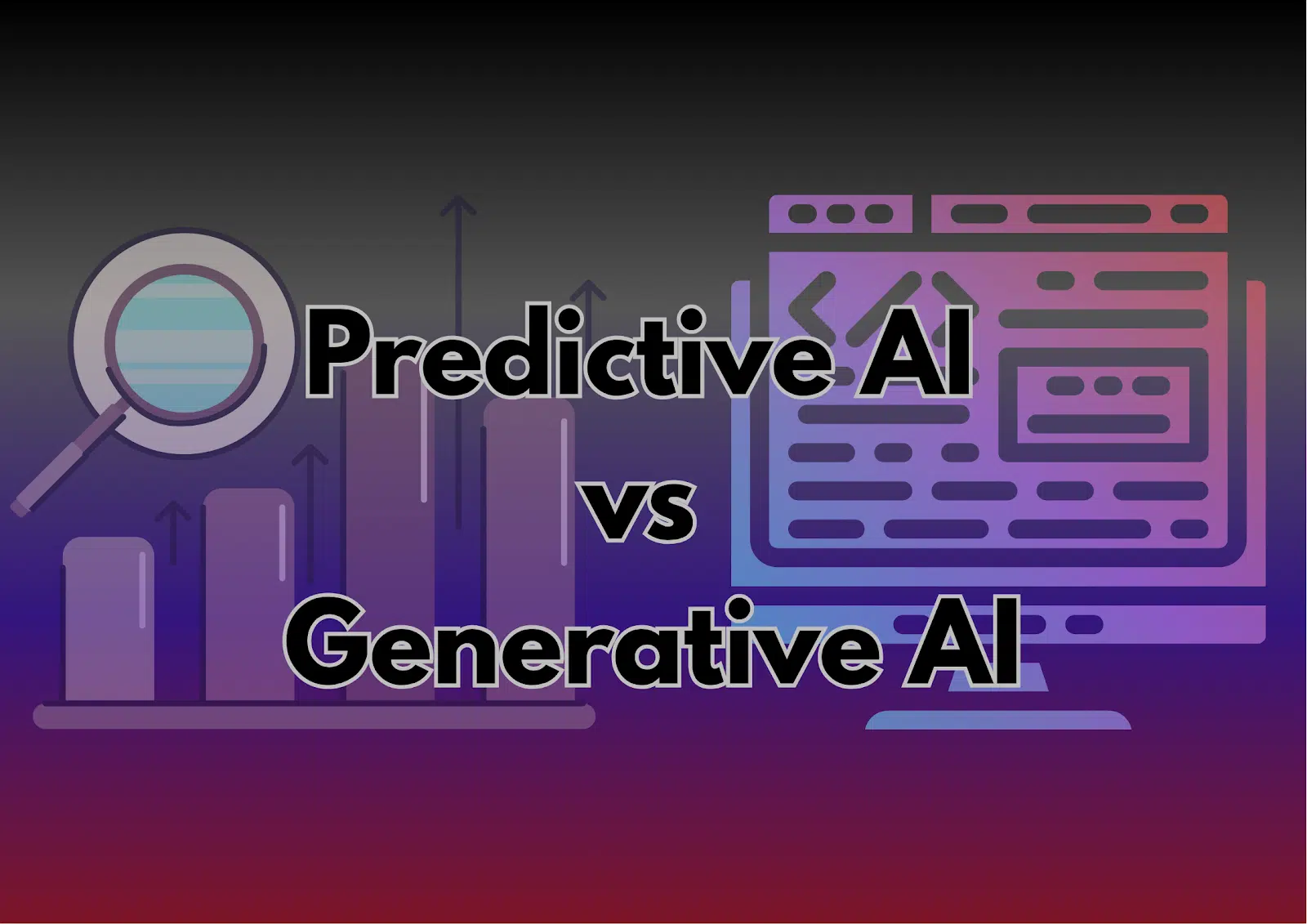
As AI becomes more embedded in daily life, the terms we use to describe it are getting harder to ignore. Two that often come up, Predictive AI and Generative AI, sound similar but function in very different ways.
They power everything from product recommendations to text generation, yet they’re built for distinct purposes. Still, the lines between them are often blurred, especially in conversations around automation, creativity, and decision-making.
In this article, we’ll explore the differences between predictive AI vs generative AI, how each works, where they show up in the real world, and why understanding the split is essential.
What is Predictive AI?
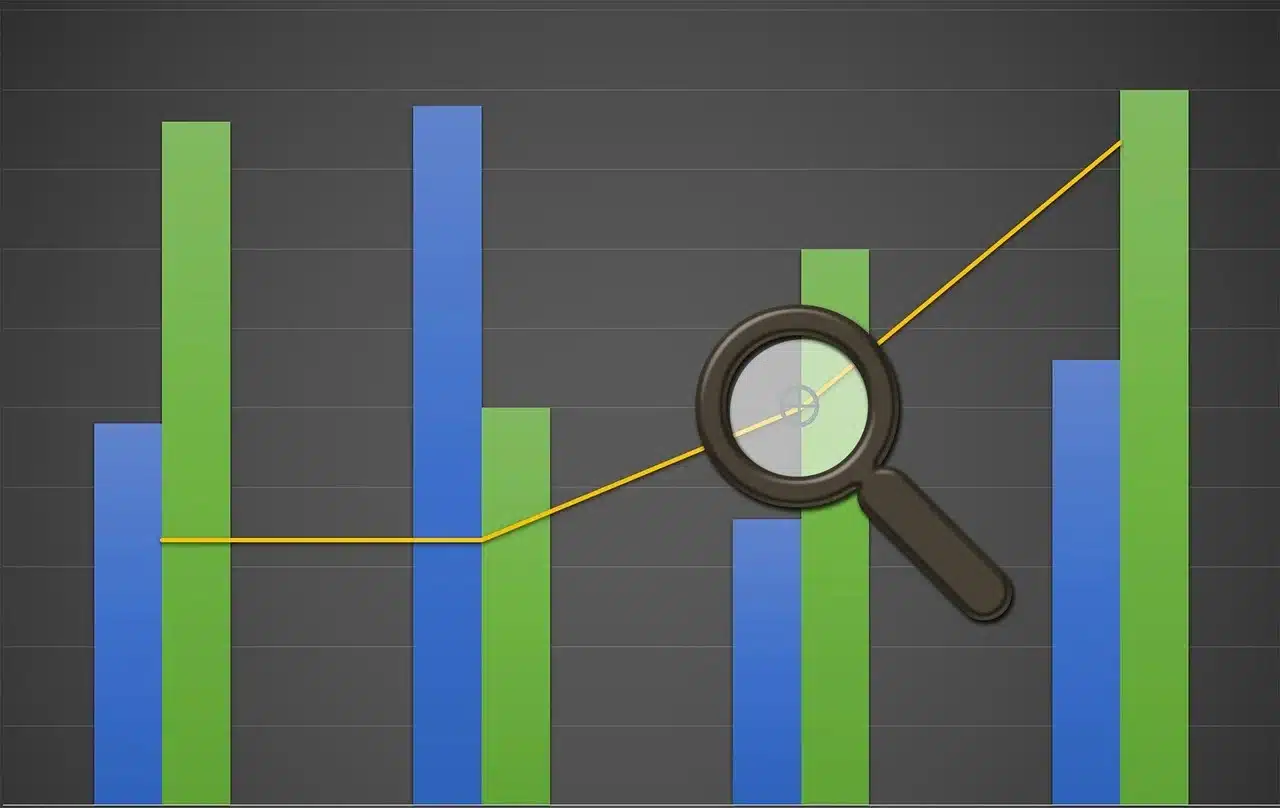
Predictive AI is built to spot patterns in data and use them to forecast what comes next. It doesn’t guess, it calculates. Using machine learning models trained on historical information, predictive AI finds correlations and trends that humans might miss, then turns them into actionable insights.
For example, a bank might use predictive AI to assess the likelihood of a loan default. It looks at thousands of data points like credit history, income level, spending habits, not to make a creative decision, but to produce a statistical probability. It’s not creative. It’s calculated.
This kind of AI powers much of what feels smart in tech today. Recommendation engines, fraud detection tools, and demand forecasting systems are all classic examples. They function by asking: Given everything we know, what’s the most likely outcome?
Key characteristics of predictive AI:
- Data-driven: It requires large, labeled datasets to learn from past behavior.
- Outcome-focused: It aims to estimate future results, not create new material.
- High stakes: It’s used in fields where accuracy matters, like finance, healthcare, logistics, cybersecurity.
In essence, predictive AI isn’t trying to surprise you. It’s trying to be right. And in many business-critical systems, that’s exactly what’s needed.
What is Generative AI?

Generative AI is a subset of AI that creates things from scratch. Text, images, music, video, code, you name it. It doesn’t just follow patterns. It learns them and then uses that knowledge to create something new. Unlike predictive AI, which points to what’s likely, generative AI builds what didn’t exist before.
The AI is trained on tons of data (think books, photos, voice recordings, etc.). Over time, it learns the structure and flow. Then, when you give it a prompt, like “design a logo for a sneaker brand” or “write a caption for this photo,” it builds something that fits, but wasn’t copied from anywhere.
For example, give a generative model a prompt like “write a product description for a smartwatch,” and it will produce a human-sounding draft in seconds. Feed it thousands of paintings, and it can generate original artwork in that style.
Common tools that rely on generative AI include:
- ChatGPT: generates text-based responses and ideas
- DALL·E: turns text prompts into images
- Sora: creates video from written descriptions
- GitHub Copilot – assists developers by writing and suggesting code
You’ve probably already seen it in action, maybe without realizing it. That AI-generated playlist description on Spotify? Generative. The ad copy that sounds a little too polished? Also generative.
It’s changing how people create and work. Writers use it to brainstorm. Designers use it to sketch ideas. Developers use it to finish code faster. But it’s not perfect. Sometimes it makes stuff up, borrows too closely from training data, or just gets weird.
Still, when used right, generative AI isn’t just smart, it’s useful. And fast.
Predictive AI vs Generative AI: key differences
While both fall under the broader category of artificial intelligence, predictive AI and generative AI solve different problems, follow different logic, and serve different goals. Understanding their distinctions is essential, not just for developers and tech professionals, but for anyone working in industries being shaped by automation.
Let’s walk through the key differences one step at a time:
- Core purpose
At the heart of each AI type is its purpose.
Predictive AI is built to anticipate. It analyzes existing data to determine what’s likely to happen next. Its goal is accuracy, producing the most probable outcome based on what has already occurred.
Generative AI, on the other hand, is designed to produce. It learns from large datasets and uses that information to create new outputs that resemble the patterns it was trained on. The goal is originality, not replication, but generation of fresh material that fits within the context it’s given.
- How they work
The technical foundations behind these two types of AI are quite different:
Predictive AI relies on supervised learning models. These models are trained on datasets where the outcomes are already known. The AI uses this historical input to find trends and apply them to new scenarios, essentially mapping “if this, then likely that.”
Generative AI typically uses unsupervised or self-supervised learning. It learns from unstructured data, like text, images, or audio, without needing labeled outcomes. Models like transformers (used in GPT and DALL·E) focus on understanding the structure of language or visual patterns to generate coherent new content.
- Input and output
Predictive AI takes input like customer history, sensor readings, or financial data, and outputs a prediction: the likelihood of churn, the chance of failure, or a recommended next action. The output is numerical, categorical, or a ranked list, something a decision can be based on.
Generative AI takes input in the form of a prompt or context (like a few words, an image, or a topic) and outputs new material, sentences, images, videos, or code. It’s less about choosing from existing options and more about constructing something from learned patterns.
- Use cases in the real world
These two forms of AI are used in very different ways across industries:
Predictive AI is often used for:
- Customer behavior modeling: Predicting who is likely to buy, cancel, or upgrade.
- Medical risk analysis: Estimating the probability of disease or complications.
- Fraud detection: Spotting transactions that deviate from normal patterns.
- Inventory management: Forecasting product demand and restocking needs.
Generative AI is used for:
- Content creation: Writing articles, emails, or social media posts.
- Image generation: Creating graphics, artwork, or product mockups.
- Coding assistance: Suggesting or generating functional code blocks.
- Product design: Generating design variations based on user input.
- Tools and technologies
Each branch of AI comes with its own ecosystem of tools. Predictive AI platforms often include Google Cloud AI, Amazon Forecast, IBM Watson, and SAP Predictive Analytics.
Generative AI platforms include OpenAI’s ChatGPT, DALL·E, Sora, Midjourney, and GitHub Copilot.
Some platforms combine both. For instance, a CRM might use predictive AI to score leads and generative AI to write personalized emails.
- Risks and limitations
Both technologies come with challenges, though they differ in nature.
Predictive AI is only as good as the data it’s trained on. If the historical data is biased, outdated, or incomplete, the predictions will reflect that. There’s also a risk of overfitting, where the model performs well on known data but poorly in real-world scenarios.
Generative AI faces issues like hallucinations (producing inaccurate or made-up information), ethical concerns around misinformation, and questions around originality and copyright. It may generate outputs that look convincing but aren’t factually correct.
- Mindset and application
Think of predictive AI as a guide, it uses logic, probability, and past knowledge to support better decisions. It’s built for efficiency, forecasting, and reliability.
Generative AI, on the other hand, behaves more like a collaborator. It helps brainstorm, accelerate content creation, or bring abstract ideas to life. It’s used to explore, create, and experiment, not just to optimize.
At a glance: comparison table
| Features | Predictive AI | Generative AI |
| Main Goal | Forecast outcomes | Create new content |
| Learning style | Supervised (with labeled data) | Unsupervised or self-supervised |
| Output type | Numbers, labels, probabilities | Text, images, videos, code, audio |
| Common use cases | Risk analysis, recommendations | Writing, design, content generation |
| Strength | Accuracy and decision-making | Creativity and flexibility |
| Limitations | Data dependency and bias | Hallucination and originality concerns |
| Example tools | IBM Watson, Salesforce Einstein | ChatGPT, DALL·E, Midjourney |
Both predictive and generative AI are valuable, but in very different ways. One helps you decide. The other helps you create. And as AI keeps evolving, the space between them is starting to blur, opening up new ways to combine both for smarter, more dynamic systems.
How Predictive and Generative AI work together
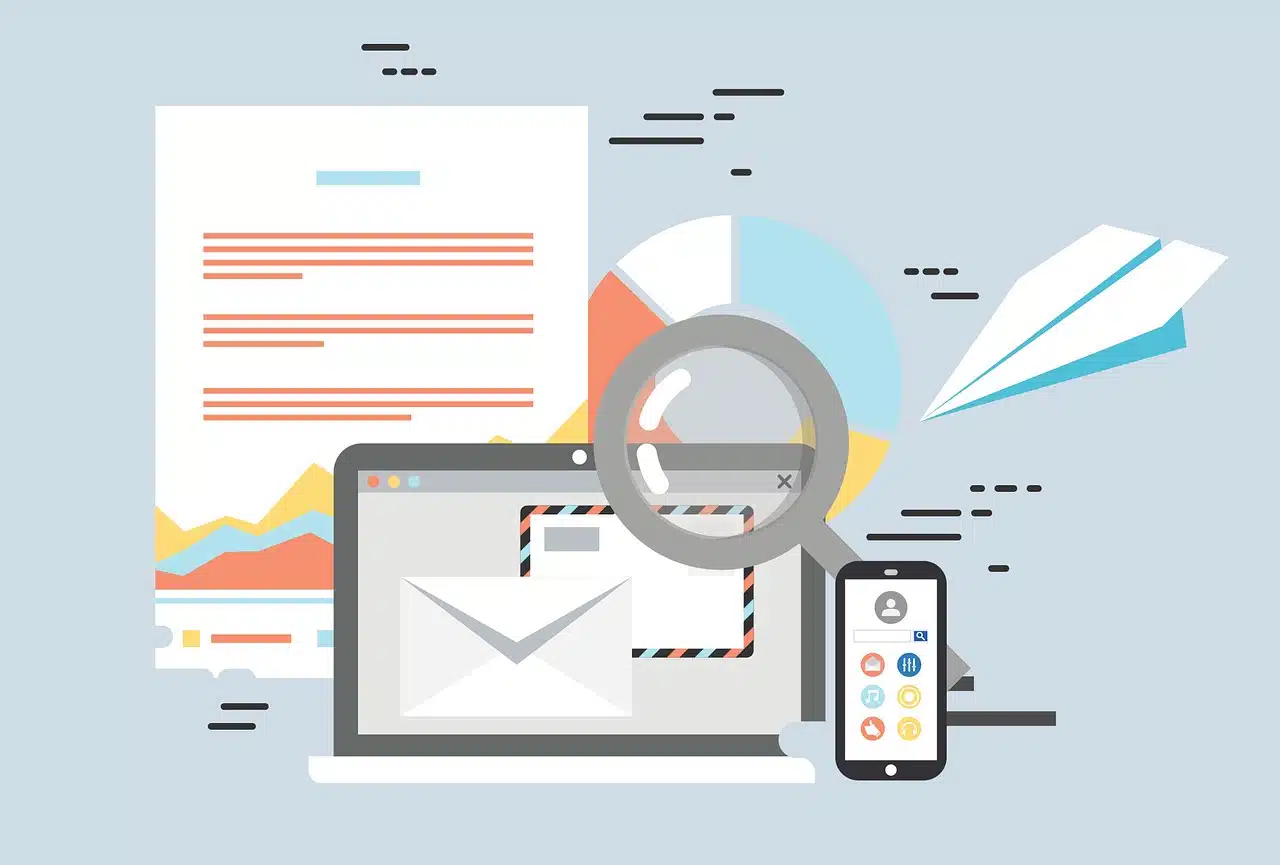
While predictive and generative AI serve different purposes, they don’t exist in isolation. In fact, many of today’s most advanced tools and systems combine both to deliver smarter, faster, and more personalized results.
Let’s break down how they can work side by side:
- Prediction first, generation next
A common pattern is using predictive AI to figure out what a system should do, then letting generative AI figure out how to do it.
Example:
In email marketing, predictive AI can score leads based on how likely they are to engage with a campaign. Once the right audience is identified, generative AI can create tailored subject lines and content for each group. One model handles targeting, the other handles communication.
- Smarter personalization
Generative AI can feel more relevant and human when it’s guided by predictive insights.
Example:
In e-commerce, predictive models might determine which products a shopper is most likely to buy. Then, generative AI steps in to write a product recommendation message that feels personal, maybe even referencing a customer’s past orders or preferences.
It’s the difference between sending a general promo and sending something that actually feels curated.
- Efficiency in customer support
Support platforms increasingly blend both AI types to handle requests smoothly.
Example:
Predictive AI can analyze a customer’s recent activity and predict what issue they’re facing. Based on that, generative AI can suggest a response or draft a help message that’s relevant and on-brand, cutting down resolution time without sacrificing quality.
- In creative tools
Even in design and media, combining both types makes the process more intelligent.
Example:
In video production, predictive AI might assess which type of content performs best with certain audiences or platforms. Then, generative AI can help produce scripts, voiceovers, or visuals that match that prediction.
Instead of guessing what content to make, teams use data to guide creativity—and AI to speed it up.
- AI assistants and agents
The next wave of AI tools, so-called autonomous agents, are starting to use both approaches by default.
They observe, analyze, predict what needs to happen (predictive), and then take action or generate a response (generative). These systems don’t just answer questions, they manage tasks, carry out plans, and adapt in real time.
Why this matters
Used together, predictive and generative AI move beyond automation into true augmentation. One informs the decision. The other brings it to life.
This combination leads to:
- More relevant and timely communication
- Smarter product experiences
- Faster workflows with less manual effort
- Tools that can think and create
As AI systems evolve, we’ll likely see even more overlap between the two, especially in tools designed to feel more human, more proactive, and more adaptive.
Real-world use cases
To see the difference between predictive and generative AI in action, you don’t have to look far. From retail to healthcare to creative industries, both types are already changing how work gets done. Here’s how they show up in real, everyday systems.
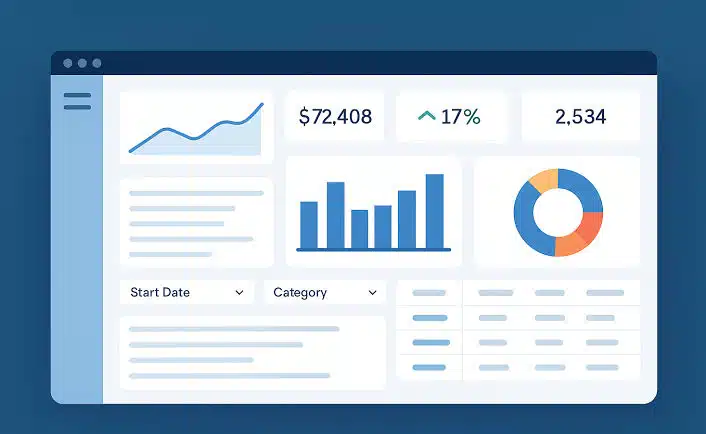
Predictive AI use cases
- Healthcare diagnostics
Hospitals use predictive models to estimate patient risk, like who’s likely to be readmitted, who may develop complications, or how a disease might progress. This helps doctors prioritize care and act earlier.
- Fraud detection in finance
Banks use predictive AI to flag suspicious transactions in real time. It constantly monitors spending patterns and looks for anything unusual, like location changes or odd payment behavior, then alerts humans if something doesn’t add up.
- Customer churn prediction
SaaS companies and subscription services rely on predictive AI to spot when a customer might be about to cancel. It looks at login frequency, usage patterns, and support tickets, helping teams intervene before it’s too late.
- Inventory and demand forecasting
Retailers use predictive models to decide how much stock to order based on seasonality, trends, and purchase history. It reduces waste, saves money, and keeps shelves full when it matters most.
- Credit scoring and loan decisions
Lenders use predictive analytics to assess the likelihood a borrower will repay a loan. It’s faster than traditional assessments, and often more accurate because it can factor in more complex data.
Generative AI Use Cases
- Content creation for marketing
Businesses use tools like ChatGPT to write blog posts, emails, social media captions, and even product descriptions. It helps marketers create more content in less time, especially when they’re short on resources.
- Code generation
Developers use GitHub Copilot to write functions, suggest fixes, or automate repetitive tasks. It’s not about replacing engineers, it’s about making their workflow faster and easier.
- Visual design and branding
Graphic designers use image generators like DALL·E or Midjourney to brainstorm concepts, create mood boards, or deliver quick drafts. It’s a powerful shortcut for early-stage ideation.
- Product mockups and prototyping
Startups use generative AI to produce quick UI designs, landing page copy, or logo concepts. Instead of hiring multiple specialists, small teams can generate decent first versions and iterate fast.
- Entertainment and media
Writers, game designers, and video creators are using generative models to write scripts, build characters, or generate soundtracks. These tools help creative teams move from idea to execution more quickly than ever before.
A note on overlap
Some use cases now involve both types of AI working together. For example:
- A sales tool might predict which lead is likely to convert, then generate a personalized message to follow up.
- A customer service bot might predict what a user is struggling with, then generate a relevant answer.
The boundaries between prediction and generation are starting to blur, and that’s exactly where some of the most interesting tools are emerging.
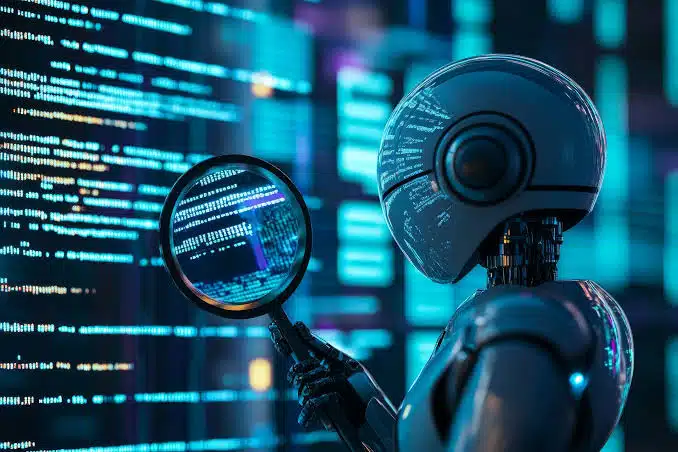
Limitations and challenges
As powerful as predictive and generative AI are, neither comes without trade-offs. Each type has its own blind spots, weaknesses, and ethical concerns, especially when deployed at scale. Understanding these limits is just as important as understanding their strengths.
Predictive AI
- Data Dependency: Predictive models are only as strong as the data they’re trained on. If that data is incomplete, outdated, or biased, the predictions won’t be reliable. Garbage in, garbage out still applies.
- Bias and Fairness Issues: When historical data reflects social or institutional bias, predictive AI can end up reinforcing it. For example, if a hiring model is trained on biased recruitment data, it may favor certain demographics over others, without being explicitly told to do so.
- Overfitting: A predictive model might perform well on training data but struggle in real-world use. That’s known as overfitting; it gets too specific to past data and loses generalization power.
- Explainability Problems: Some predictive models, especially deep learning ones, operate like black boxes. They make decisions, but don’t explain why. This can be a major problem in industries like finance or healthcare, where accountability matters.
- Reactive, Not Creative: Predictive AI is great at spotting trends and warning you in advance, but it can’t offer new ideas or build original content. It can’t go beyond what it’s seen.
Generative AI
- Hallucination: Generative AI sometimes makes things up. It might produce a fake quote, invent a source, or generate entirely false content, especially when it’s pushed to talk confidently about topics it doesn’t fully understand.
- Copyright and Originality Concerns: There’s ongoing debate over how generative models use training data. If an AI is trained on millions of artworks, blog posts, or songs, is the output really “original”? This raises tough questions around plagiarism, ownership, and fair use.
- Bias and Toxicity: Like predictive models, generative AI can reflect the biases in its training data. It may generate harmful stereotypes or inappropriate content, even without intending to. Filters can help, but they’re not perfect.
- Misinformation Risk: Because generative AI outputs sound confident even when wrong, it can unintentionally spread misinformation. This is especially dangerous in areas like news, healthcare, or public education.
- Lack of Control: Once you give a prompt, the AI generates based on probability, not intent. You don’t always get exactly what you want, especially if the prompt is vague or complex. This unpredictability makes quality control tricky.
Shared Challenges
While their issues differ, both predictive and generative AI raise similar concerns:
- Transparency: Users often don’t know how decisions are made or content is produced.
- Regulation: Clear guidelines for ethical and responsible AI use are still evolving.
- Human Oversight: Neither type of AI should run unchecked; there always needs to be a human in the loop.
Both technologies are improving fast, but they’re far from flawless. Being aware of these challenges helps teams use them more responsibly, and with better results.
Wrapping up
The terms predictive AI and generative AI may sound similar, but they serve very different roles, and knowing that difference matters. Predictive AI helps systems see what’s coming. Generative AI helps them create something new. One guides decisions. The other shapes content, ideas, and experiences.
Both are valuable on their own. But in many real-world tools, the real power comes when they’re used together, combining insight with creativity, precision with possibility.
Understanding how these two forms of AI work and where they fit, can help you make smarter choices. Whether you’re running a business, building a product, or just staying informed, the distinction isn’t just technical. It’s practical.
Have thoughts, questions, or something to add? Drop it in the comments, let’s keep the conversation going.
You may also like :
| Favourite AI Quotes | Best AI courses for beginners 2025 |
| Best AI for lawyers 2025 | Top AI Courses in SA |
| Best AI tools for content creation |

